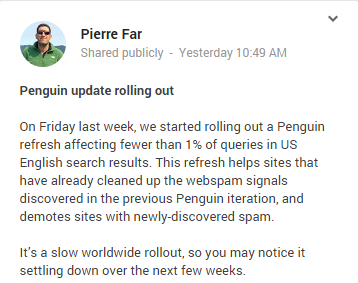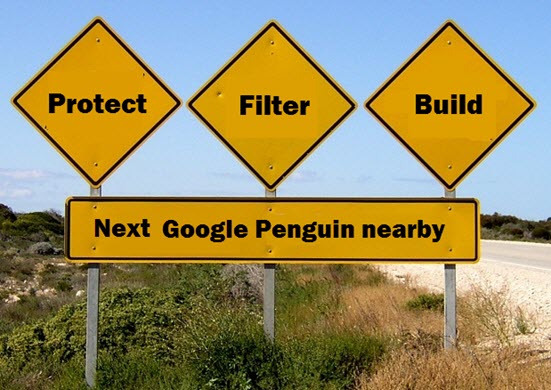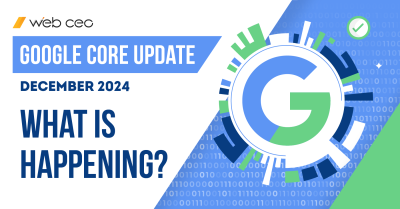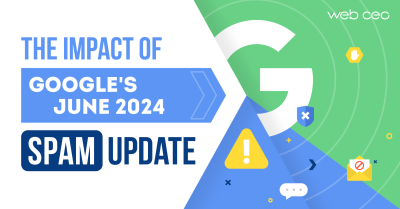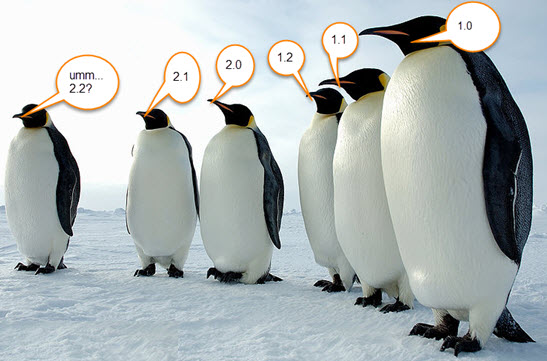
I love penguins and many of you do as well. They are cute, not aggressive and have a funny way of walking. But to those who do SEO, a penguin is a kind of monster pecking their sites and eating their rankings. No wonder most SEOs shudder at the thought of penguins. It’s been almost a year since the 2.1 edition of Penguin rolled out. Now, just in time for Halloween, the Google Penguin 3.0 Update is here. It started its invasion on October 17th and it is going to roll out across the globe over the next several weeks. People initially felt relief after John Mueller (the famous Google Webmaster Trends Analyst) said that the update had already been completely rolled out, but this was soon followed by an unexpected message from Pierre Far (another major Google Webmaster Trends Analyst) implying that the effects were yet to be seen in most cases.
The good news is that if you were hit by a previous Penguin update, you will probably see some positive shifts in your site rankings and traffic, *if* you responded to that previous update by cleaning up your link profile and assuming that you said good-bye forever to black hat linkbuilding tactics. If you did this, Google probably forgave and blessed you. However, folks are still confused at how smoothly the update is landing. Anticipation is high; the fear of a further heavy impact. SEOs want to know how things will be moving and in what direction.
To Update or Refresh? That Is the Question!
While the latest Penguin Update is rolling out, SEOs speculate on what Google has put into this. Is this a major update with new signals added to the algorithm or just a simple data refresh? How did it come about that two official spokespeople of Google failed to put out a unified message? Are there two Google “lobbies” or is it that we’re supposed to be a bit confused? It seems that the Google Penguin Update didn’t smoothly roll out entirely on October 17th. Why it was named Penguin 3.0 and not 2.1, considering the fact that it was officially named a refresh?
First, let’s follow Matt Cutts explanation of what an actual update is and what a refresh is. Matt makes cute comparisons of an index update, algorithm update and data refresh with car parts. However, the listener will still struggle with knowing what’s on Google’s mind.
What Are the Link Building Tactics Scorned by Penguin 3.0? The Key Takeaways.
Similar to the previous versions, Penguin 3.0 is trying to clean up the web from link spam on the one hand and, this time around, to also recover the positioning of good sites that were hit by Google Penguin 2.1 and then reacted positively.
Among the key takeaways of the Penguin 3.0 Update, the most noticeable at the moment are the following:
- Google has now hit sites that use grey hat 301 redirects.
- There has been a slight shift from site-wide to page-level impacts of the Google Penguin Update. While de-indexing home pages, Google Penguin 3.0 may allow internal pages to continue ranking on search results if they are free of spam links themselves.
- There are now penalties for Affiliate sites and Private Blog Networks.
- Google is now planning to run Penguin updates on a regular and frequent refresh basis with smaller impacts, similar to what they did with Panda Updates.
- Link profiles similar to those of the sites penalized in the last updates are likely to be hit by the Google Penguin 3.0 Update. If you escaped with toxic links before, you may not be so lucky now.
Future Penguin Strategy Predicted by WebCEO.
The bad news is that it is too late to “hide” from Penguin 3.0. Penguin was at your home and if you had not already cleaned up your home from any backlink mess a month or so before the Penguin rollout, your home may not now be found on “1st page Google” street until the next Google Penguin comes by.
If you want to sleep well without spending restless nights with coffee, quivering as you create toxic link disavowal reports in GWT, you should follow the following simple strategy that will keep you away from problems with “Big Brother:”
Protect your site by conducting a detailed analysis of your current backlink profile using the WebCEO Backlink Quality Check tool.
Filter external links to your site and refine those of high quality. Not all backlinks add value to your site, even if they pass link juice. Pay attention to the relevancy of a link, its provenance, their sourced domains and the pages they lead to, whether they have an exact-matching or a diversified and keyword rich anchor text.
Build your Penguin-proof link profile using some up-to-date link building techniques including implied links usage, trusted social citations and competitive backlinks analysis.
